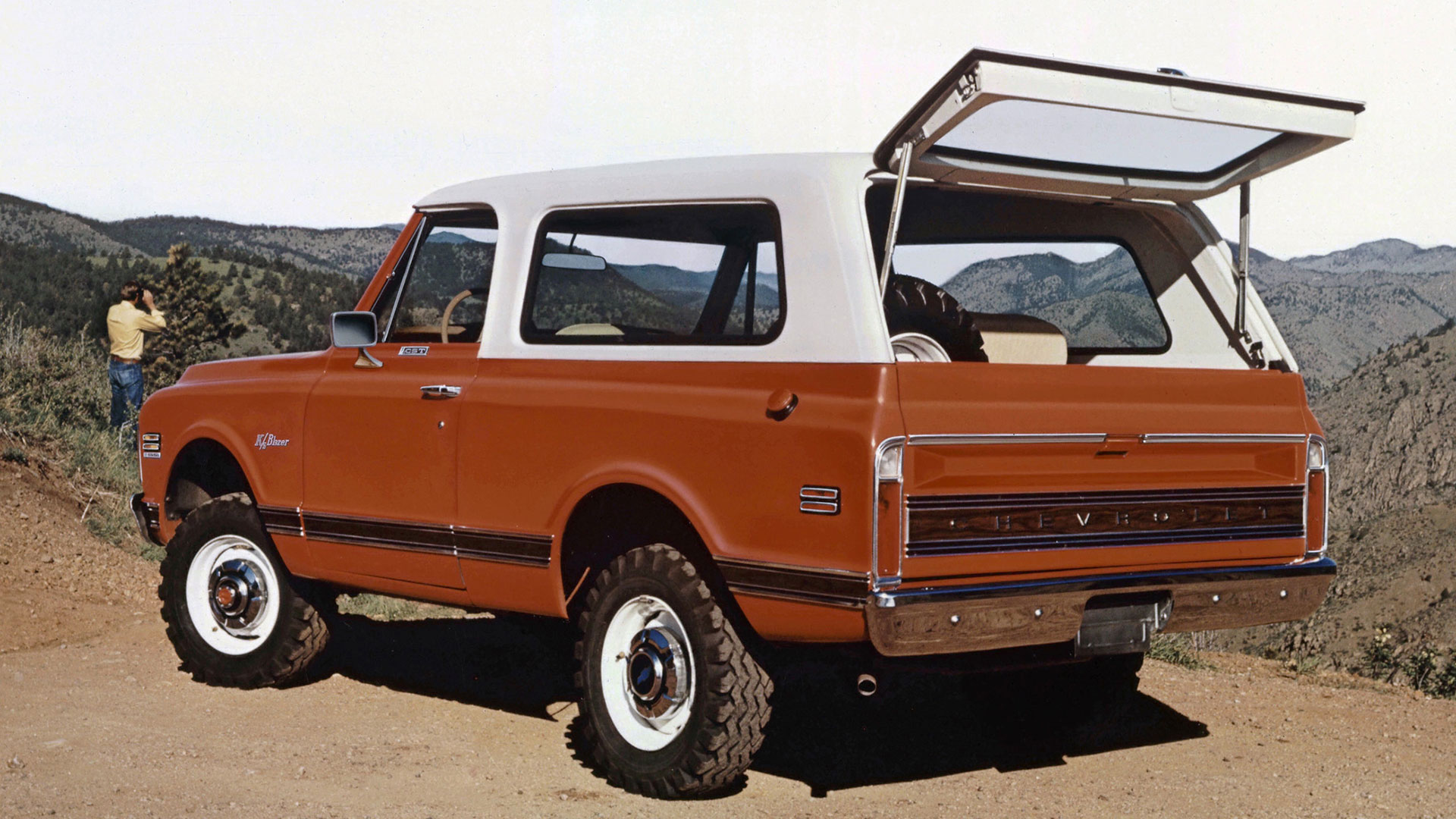

Amidst a rash of weddings that occurred within my demographic cohort some years back, my boyfriend and I developed a key reception-exit cue: when Madonna came through the loudspeakers, it was time to leave. The party had peaked and crested. It was over.
A similar concept can be applied to the collectible car market. By the time a vehicle makes in into the pages of a glossy New York City lifestyle magazine—and I can say this with confidence, having played the role of car guy at books like GQ, Maxim, Details, and Vanity Fair—it’s probably removed the ol’ suit jacket, polished off the bourbon, and secured a tie to the dome.
The first generation Ford Bronco is in this month’s GQ. Vintage Jeeps and Toyota Land Cruisers have preceded it. Some of these are now six-figure vehicles. Cue the Madonna.

This is understandable: vintage trucks are one of the hottest segments of the collectible vehicle market, and one of the most compelling, especially for the kind of people who read this type of magazine.
“I think there’s a word men don’t like to use when describing old trucks, but there’s a romantic element to this connection,” says Jonathan Ward, founder of ICON, a boutique California shop that exquisitely re-engineers and re-imagines vintage trucks. “Because so many of us grew up with them and have experiences—memories, smells, tastes—connected to them. Even if you got stranded in one and it’s a shit memory, it still becomes a memory that you’re stuck with and ties you to that vehicle.”
Let’s say you want to get into the classic truck market, but you want to stand out a bit from the Venice/Brooklyn topless-truckster crowd with all of their perfect (and perfectly desirable) Broncs, CJs, and FJ40s. Might we turn your attention the first generation Chevy Blazer K/5?

The Bronco was designed to compete with the Jeep. The Blazer was designed to compete with the Bronco, a double one-upmanship which it immediately achieved, crushing it (and all of its other competitors) in sales. The Blazer’s winning attribute? Bigness. “I don’t think people often realize the scale of them until they’re sitting next to a [Jeep] CJ5 or a Bronco. You realize how immensely larger they were,” Ward says.
This scale offered a roomier back seat, more cargo space, and a less jouncy ride than their chopped-wheelbase competitors. The Blazers’ later production start date also allowed Chevy to incorporate the kind of creature comforts that were then just creeping into the truck market, like air conditioning and automatic transmissions.
A quick survey of some of the better car shopping sites reveals that most specimens still in existence have either been sprayed in fawn-colored primer and outfitted with knobbies and assault rifles, or candy-coated in low-riding Impala hues and slammed over chromies. But there are still unmolested versions to be had, and though those are spiking in price, they’re still significantly cheaper than the competition.

According to our friends at Hagerty, global experts in vintage vehicle valuation and insurance, an average (“Condition 3”) 1971 Toyota FJ40 Land Cruiser now runs over $44,000. An average 1971 Ford Bronco is now priced over $17,000. A similar 1971 Chevy Blazer K/5: $11,100. And that’s with the big, 250hp 5.7 liter V8 and the high-end CST trim package. Get one with a 175 hp straight-six and basic accoutrements you’re comfortably under ten grand. Papa, do preach.
Like all vintage vehicles, especially vintage trucks, Blazers come standard with a litany of headaches. These big bruisers were made with fairly loose, flexible chassis, so be ready for lots of play in the steering and frame, and beware of too much power. “I think people often get into trouble by shoehorning the highest displacement, highest output motor they can find into them, and then wondering why it’s a squirrely death trap,” Ward says.
They also tend to rot. “Land Cruisers have rust problems, but you can kind of learn to anticipate where to look and where it’s going to be,” Ward says. “I find that these seem to be rust-prone in surprisingly odd areas, like the top of the windshield frame.” (As the owner of a 1972 GMC Suburban, I can corroborate this observation.)

And their removable fiberglass hardtop, a great asset on these and other classic, truck-based proto-sport-utes, can offer up some intriguing challenges. For example, the top has a textured coating so if you need to repair just one area, it’s very difficult to match the texture. “They sell this drywall repair kit at Home Depot, so after you’ve fixed a hole in your drywall and its too smooth from the spackling, there’s this aerosol shit you spray on that reintroduces that moderate texture you see on drywall,” Ward says. “We found ourselves MacGyvering that into the equation to restore the finish on a Blazer’s top. It was not fun.”
Despite all of this, old trucks are basic, and sold in huge numbers. So, according to Ward, the vehicles are “charmingly easy to restore,” and the “depth of resources in replacement parts is astoundingly good.” (I’ve found that you can practically build a complete vehicle from the LMC Truck catalog.)
A Blazer is perhaps not as lovely or delicate as a contemporary Bronco or FJ40, but it’s a truck—lovely and delicate aren’t exactly part of its DNA. “The Blazer is a bit bolder, a bit more brash,” Ward says. “But it’s sort of the bully quarterback who, once you get a beer in him, is actually a nice guy. A sweetheart.”